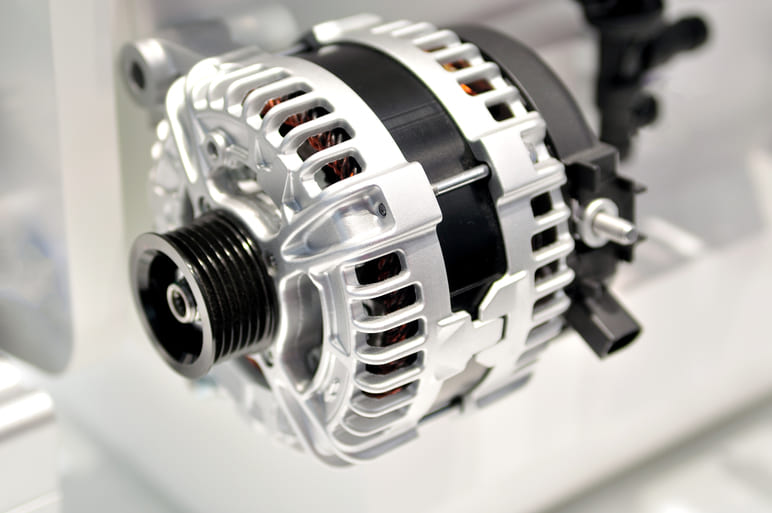
Alternator problems could leave you stranded on the road side. Regular testing is the only way to prevent this – there really is no other alternative.
Fading headlamps, the dying sound of the radio, heating or air condition systems not working, and even cars failing to start. These problems, like many others, are almost always said to be caused by a car’s battery being flat or being faulty.

But car batteries have been taking the blame for too long and they often aren’t really responsible. The battery’s only true job is to start the engine. As soon as the engine is on, all of the energy for the electrical systems comes from the alternator. The alternator also has the task of charging up the battery, so even a flat battery not letting you start the car is really the fault of the alternator. Let’s find out exactly what the alternator is and what an alternator check or alternator test to sort out some common alternator faults might look like.
What is an alternator
The alternator works with the battery to generate the electrical current needed for the car’s electrical systems, such as interior and exterior lighting, instrument panel, climate control, ABS, entertainment systems and many more. This makes it an integral part of the engine and if it fails the results can be very problematic. It gets its name from alternating current, the type of electric current that is produced in the alternator.
Alternators are found in the engine compartment and are small and lightweight and those found in most passenger cars and small vans are encased in an aluminum outer shell. Aluminium is the most common choice because of its light weight and because it does not magnetise. This is important because the way the alternator functions, which we’ll get to later, revolves around electromagnetic energy. Aluminium can also effectively dissipate the tremendous heat generated through the production of electrical power.
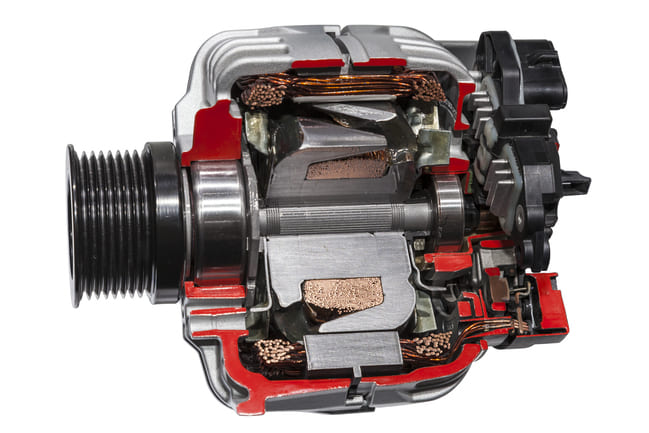
The main alternator components are the rotor and stator, along with the diode and the alternator pulley.

How does an alternator actually work
To understand what the common alternator problems are, we should first know how it actually works. Put simply, the alternator converts the mechanical energy from the engine into electrical power for the car’s accessories.The way alternator’s work seems pretty complex, but it has a lot to do with the intriguing ways in which electrical energy can be produced. Alternators produce power through electromagnetism formed through interaction of the two main components of alternators, the rotor and the stator.

The alternator pulley on the front of the alternator is attached to the engine via the drive belt. When the engine is running, the crankshaft turns the drive belt which in turn spins the pulley on the rotor shaft.
The rotor is a cylinder wrapped in copper field coil windings with a series of small magnets arranged in an alternating north-south pattern attached to the outside of the cylinder. The rotor is essentially an electromagnetic that rotates thanks to the drive belt connected to the crankshaft turning it.
This rotor is encompassed by a stationary set, or multiple sets, of copper wires joined together by a steel core; is the stator.
When the engine is running, the electromagnet rotates within the bunch of copper wires and it creates energy in these coils through electromagnetic induction. This current induced in the stator alternator wiring is AC current and has to be converted into DC to get it into the battery. This power is, therefore, then routed to the diode that stops the current from alternating and converts it to direct current. And this seemingly complex process and system is what makes all of the tiny symbols on your dashboard light up!
Some of the common faults are alternator brushes being worn out, the alternator wiring needing to be replaced, or the drive belt being worn down or loose. This could lead to the alternator not charging the battery or the alternator draining the battery and ultimately leading to flickering headlights, failing electronics, and bad smells coming from the battery.
How can I test my alternator
In the past, it was common for people to try and check their alternator by disconnecting the negative battery cable. Our advice: Don’t do it – you risk burning out every electrical device in your vehicle because when there is no battery to act as a buffer in the circuit, the alternator can put out up to 150 volts, depending on the engine’s rpm. This ‘easy alternator test’ could cost you thousands of pounds in damage. There are, however, a couple of simple and safe alternatives to test your alternator.
How to test your alternator with a multimeter
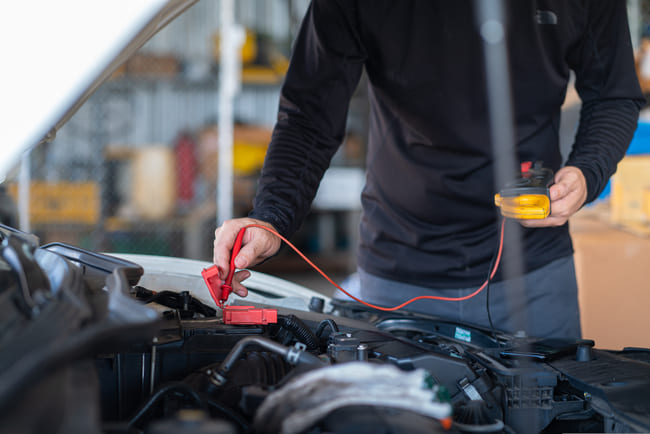
This is one of the most effective and reliable ways to test your alternator. You’ll need to have a voltmeter or multimeter, or use an alternator test bench, to check the alternator output voltage and see if there is the right amount to charge the battery and run the car electrics.
With the engine off, open your car’s bonnet so that you have access to the battery. Find the alternator and make sure the drive belt isn’t loose (as this itself could be the source of one of the problems). Take your prefered alternator tester, either voltmeter or multimeter, and turn it to the 20 V setting.
It’s best to check the voltage both with the engine off and when the engine is running. To test the voltage, you’re going to connect the voltmeter to the alternator connections. Take the positive multimeter lead (red) and connect it to the red terminal on the alternator. Now take the negative (black) multimeter lead and bring it into contact with a metal part of your car’s body (for example, a bolt head or even the negative terminal on the car battery). Don’t touch it, however, to the alternator itself. A reading should now appear on the display of the multimeter. With the engine off, the voltage should be between 12.5 and 12.8 volts. You can also connect the voltmeter to the battery to check the voltage.
If at this stage there isn’t enough voltage (12.2 V), then the battery needs to be charged to test the alternator.
Now, start the engine. At this point, check that the alternator pulley and the alternator belt are spinning properly without slipping.If you have easy access to the alternator without the risk of any body part of clothing coming into contact with the spinning belt, then you can repeat the process as before. If not, you can simply connect the voltmeter to the battery (negative to negative, positive to positive).
If the alternator is working well, your meter should read somewhere in the vicinity of 14 volts (typically 13.8–14.2). If it is reading higher than 15 volts it is possible that the voltage regulator on your alternator is faulty or going bad. If it is reading lower than 13–14 volts, it could be a sign that your alternator needs to be replaced and there is a fault with it.
How to test your alternator without a multimeter
One way to test your alternator without using a voltmeter is to visually and physically monitor the performance of the alternator. Alternator noise is a big indicator that something isn’t right. If there is a problem with an alternator bearing you may hear the alternator whine and make a squealing sound which comes from the front of the car, which becomes louder with more electrical accessories using power at the same time. We can also use our sense of smell to test the alternator if things are really bad. If you notice a bad smell coming from the car battery (mostly resembling rotten eggs) this is a sign that the alternator isn’t operating properly. This pungent smell is caused by the car battery (namely the electrolyte) if the alternator is producing too high voltage. The battery acid starts to “boil” inside the battery causing these bad-smelling vapors.
This problem is pretty dangerous as these fumes are flammable. Also ,if the car is driven in this state for a prolonged period of time, it may cause permanent damage to the car battery.
How to test your alternator with a screwdriver
The final, incredibly simple although not always conducive way to test your alternator is with a screwdriver or other metal object. Because all of this energy is generated by electromagnetic induction, there should be a strong magnetic field in the alternator. Put the screwdriver close to the bolt on the alternator pulley and turn your key in your car’s engine without starting the engine. This will activate the voltage regulator and you should observe a high level of magnetism which will pull the screwdriver towards the nut or bolt on the alternator pulley. If this doesn’t happen, the chances are your alternator isn’t functioning as it should be.
- @user_108282131.07.2022 07:43Member
Hi , I have a two year old Fiat 500 Abarth. If the key in the ignition is turned on I can listen to the radio without the engine on. Yesterday after an hour the battery was flat and the engine would not start.
I turned the radio off as it was still on and playing and removed the key. 10 mins later when I put the key in the ignition the engine started. I have since tested it again with the same result . Exactly the same happened 2 weeks ago when i had cold air full on without the engine on. Please advise what you think the problem is. This has not been a problem in the past. Thanks. David - @user_deleted04.04.2023 11:14Member
[…] problems, spark plug issues, starter problems, frozen components, ignition switch problems, alternator problems, low fuel pressure, timing belt issues, and engine oil […]













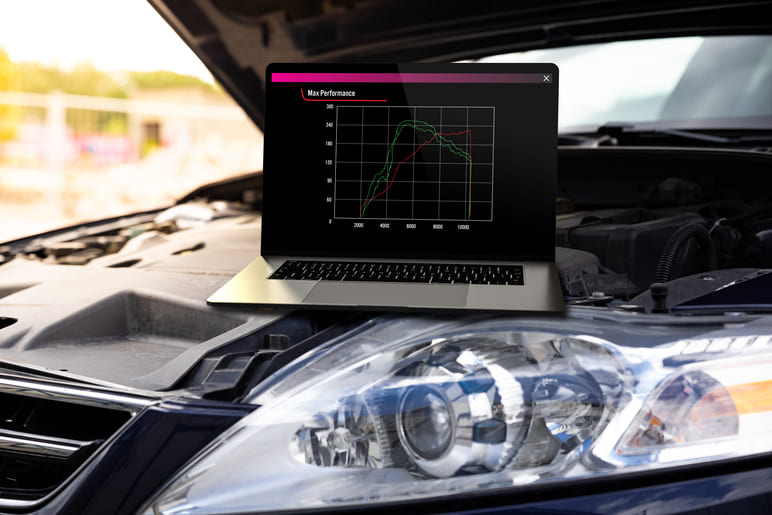



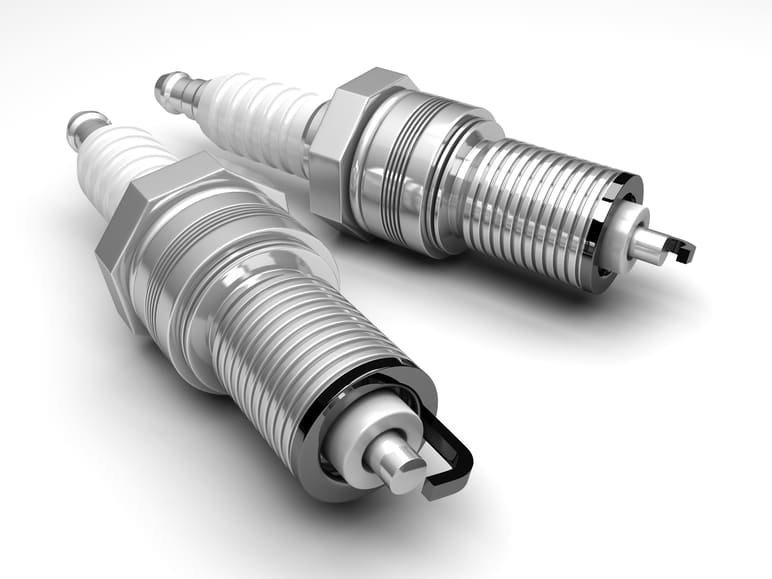
Comments – 2